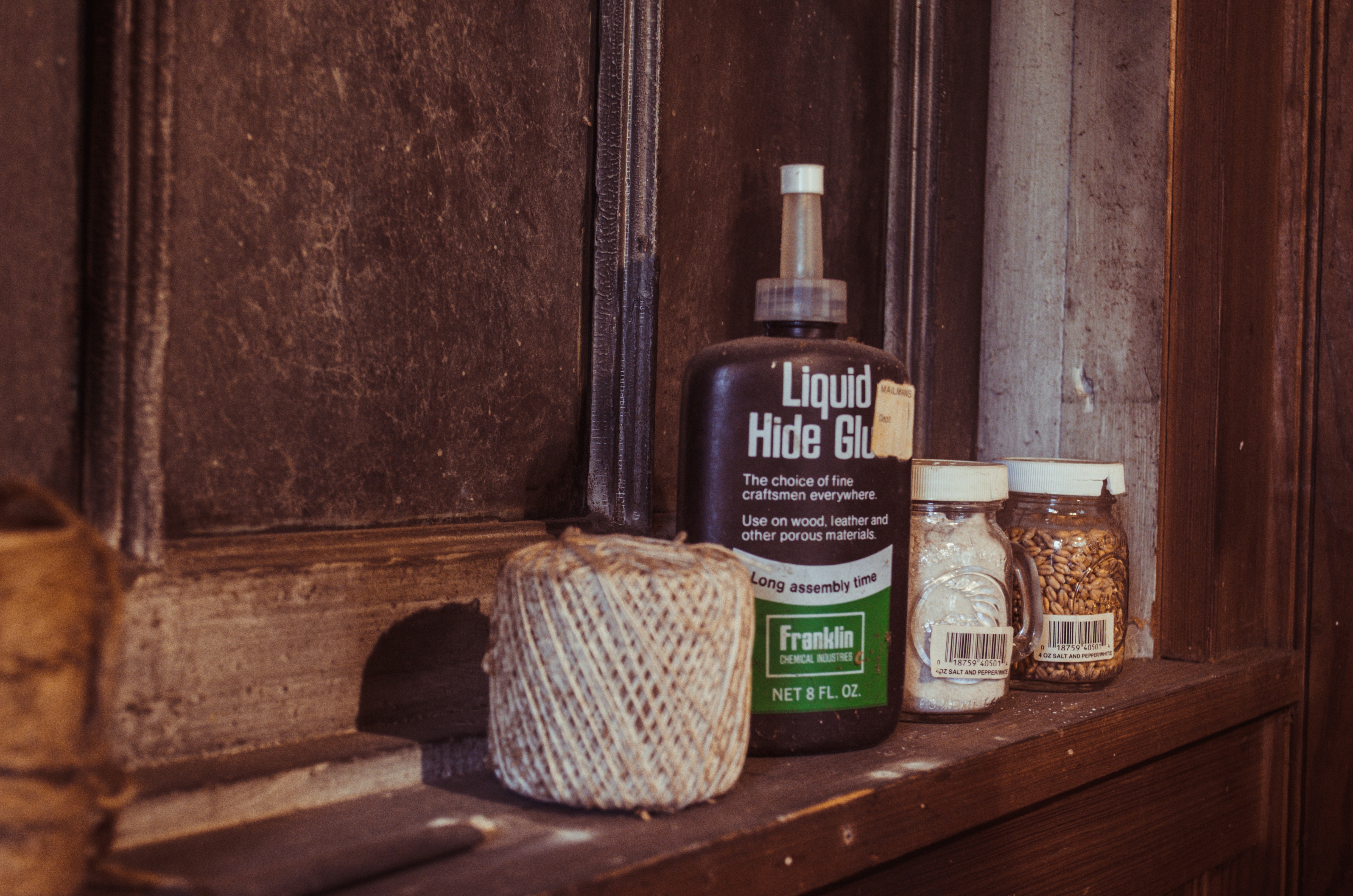Understanding Wood Glue: What Is It and How Does It Work?
Wood glue is a powerful adhesive specifically formulated for bonding wooden surfaces together. Its composition typically includes polyvinyl acetate (PVA), polyurethane, or epoxies, which are essential for achieving strong and lasting connections between wood pieces. The effectiveness of wood glue can be attributed to its unique chemical properties and the intricate interactions it has with the wood’s cellular structure.
When wood glue is applied, it penetrates the porous surface of the wood, reaching into the fibers and forming a chemical bond as it cures. This process begins with the glue’s moisture content evaporating, allowing it to harden and create a solid adhesive layer. The composition of each type of wood glue—be it PVA, polyurethane, or epoxy—affects not only the bonding strength but also the required curing time and environment for optimal use.
The cellular structure of wood plays a crucial role in the bonding process as well. Wood consists of tiny cellulose fibers surrounded by lignin, which act as a natural adhesive within the material. When wood glue is introduced to this structure, it fills in the gaps between the fibers and bonds with both the cellulose and lignin, reinforcing the overall strength of the joint. This interaction not only makes the glue integral to furniture construction and woodworking projects but also emphasizes the need for proper surface preparation. Any contaminants, such as dust or oil, can hinder the adhesive’s ability to bond effectively. Thus, ensuring clean, smooth surfaces before applying wood glue is essential for achieving the best results.
Understanding the science behind wood glue not only aids in selecting the right type for a specific project but also highlights its significant role in enhancing the durability of wooden assemblies. Ultimately, the effectiveness of wood glue is dependent on both its properties and the preparation of the surfaces it binds.
Types of Wood Glue: An In-Depth Look at Options
Wood glue comes in various formulations, each tailored to specific needs in woodworking and carpentry. Understanding these types can significantly enhance the quality and durability of woodworking projects. One of the most popular types is PVA (Polyvinyl Acetate) glue, commonly known as white or yellow glue. This adhesive is favored for its ease of use, strong initial tack, and quick drying time, making it ideal for indoor projects. However, it is not waterproof, which limits its external applications.
Polyurethane glue is another popular choice, known for its exceptional strength and versatility. It can bond a wide range of materials, including wood, metal, and plastic. One of its standout features is its water-resistant properties, making it suitable for outdoor applications. Nonetheless, the foaming action during curing can be a disadvantage, as it may require careful management to avoid excess expansion.
Epoxy adhesives offer unique advantages in woodworking, particularly in providing a strong bond that is both water and heat-resistant. This makes epoxy suitable for high-stress applications, but the curing process can be time-consuming, and it often requires precise mixing of components. Despite these challenges, the resulting bond is exceptionally durable, making it a preferred choice for furniture repair and restoration.
Lastly, hide glue, a traditional adhesive derived from animal collagen, offers a unique combination of properties that appeal to woodworkers focused on restoration and fine woodworking. Its ability to be reactivated with heat and moisture is advantageous for repairs. However, it has a longer drying time compared to modern adhesives and requires specific application techniques.
When selecting wood glue, consider factors such as drying times, water resistance, and application methods. Each type of glue has its advantages and disadvantages; understanding these can assist in choosing the right adhesive for your specific woodworking project.
Applications of Wood Glue: Where and How to Use it
Wood glue serves a critical role in various woodworking applications, ranging from furniture construction to intricate cabinetry. Its versatility makes it an essential product for both amateur and professional woodworkers. One of the most common uses of wood glue is in the assembly of furniture pieces, where it is applied to joints to ensure a sturdy bond between different components, such as tabletops and legs. In cabinetry, wood glue is utilized to attach doors, shelves, and structural elements, contributing to durability and aesthetic appeal.
In addition to furniture and cabinetry, wood glue is invaluable in various woodworking projects. Craftsmen often use it for laminating thin wood strips, creating decorative elements, and assembling miter joints in frames and boxes. The application technique is crucial for optimal results: wood surfaces should be clean and free of dust or oil to facilitate maximum adhesion. A common practice is to apply an even bead of glue along the joint, followed by the careful alignment of the pieces to maintain accuracy in the final product.
Effective clamping is also vital when using wood glue. Clamps help ensure the joint remains securely pressed together while the glue sets, preventing gaps that could weaken the bond. Allowing adequate curing time as per the manufacturer’s recommendations is essential for achieving the desired strength. Furthermore, wood glue can be easily removed with a damp cloth if cleaned promptly after application, preventing unsightly residue. Common issues, such as glue squeeze-out, can be mitigated by controlling the amount applied and by using clamps judiciously. In rare cases where a bond fails, it is often due to insufficient clamping pressure or inadequate surface preparation, making attention to detail paramount during the application process.
Strength Comparisons: Evaluating Wood Glue Performance
When it comes to woodworking, selecting the appropriate adhesive is paramount to ensuring the durability and strength of any project. Different types of wood glue exhibit varying levels of performance, notably in terms of tensile and shear strength. Tensile strength measures a glue’s ability to withstand pulling forces, while shear strength assesses its performance under lateral stresses. Scientific research and practical testing reveal that polyvinyl acetate (PVA) glues, such as white and yellow glue, offer superior tensile strength compared to traditional hide glues, making them a popular choice for many woodworking applications.
In addition to tensile strength, shear strength must also be considered when evaluating wood glue types. For instance, polyurethane glues generally outperform PVA glues in shear strength, rendering them suitable for outdoor projects or high-stress situations where moisture and environmental factors come into play. However, proper surface preparation remains critical regardless of the adhesive chosen, as contaminants can significantly affect bonding performance.
Several factors influence the strength of glue joints, including wood species, moisture content, and application technique. Different wood species have varied porosity and density that affect how well the glue penetrates and bonds with the fibers. Furthermore, the optimal moisture content of both the wood and adhesive during application can greatly influence the strength of the adhesive bond. Testing methods such as the ‘pull test’ or ‘shear test’ can provide valuable insights into the bonding strength of a specific glue under real-world conditions. These evaluations can guide woodworkers in selecting the ideal adhesive for their projects, ensuring that the chosen wood glue best fits their specific requirements and offers the necessary performance level.
If you’re interested in purchasing the item you seek, please click the link for additional details: #americanachoice.
https://amzn.to/3SBN3Oy
AFFILIATE DISCLOSURE: I am an affiliate for this company, I am not a paid employee.
I may receive a commission if you click a link on this page and choose to purchase something.
You can rest assured I will only share things I believe in and will be valuable to you.



